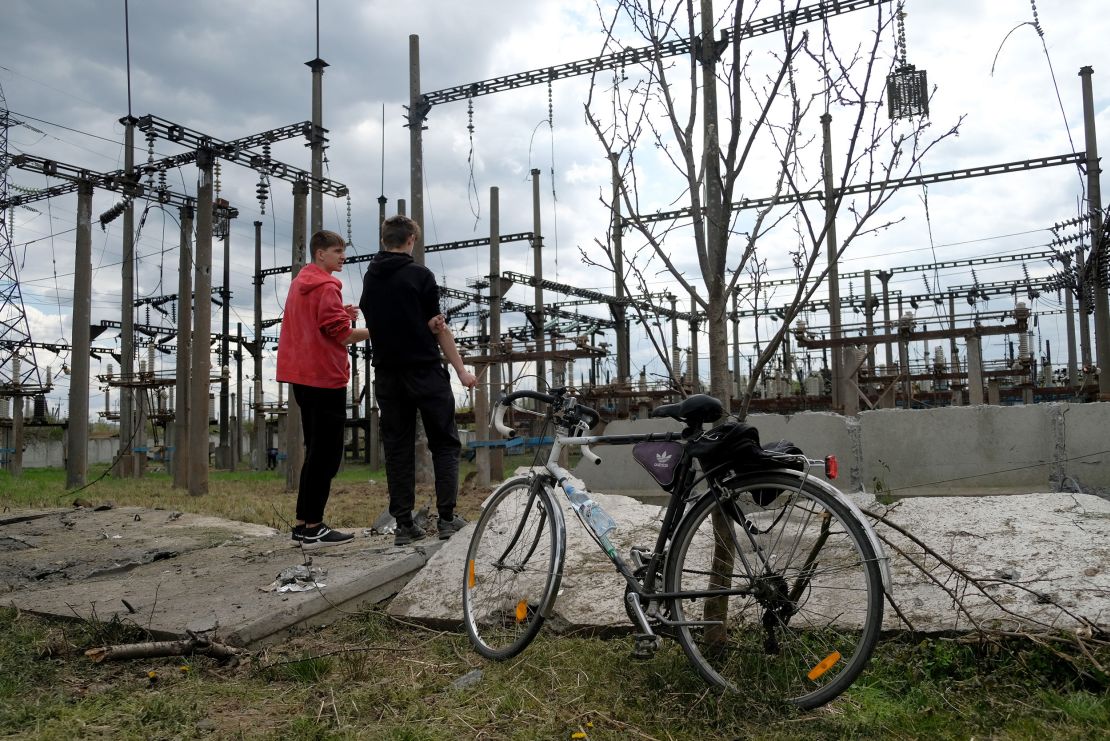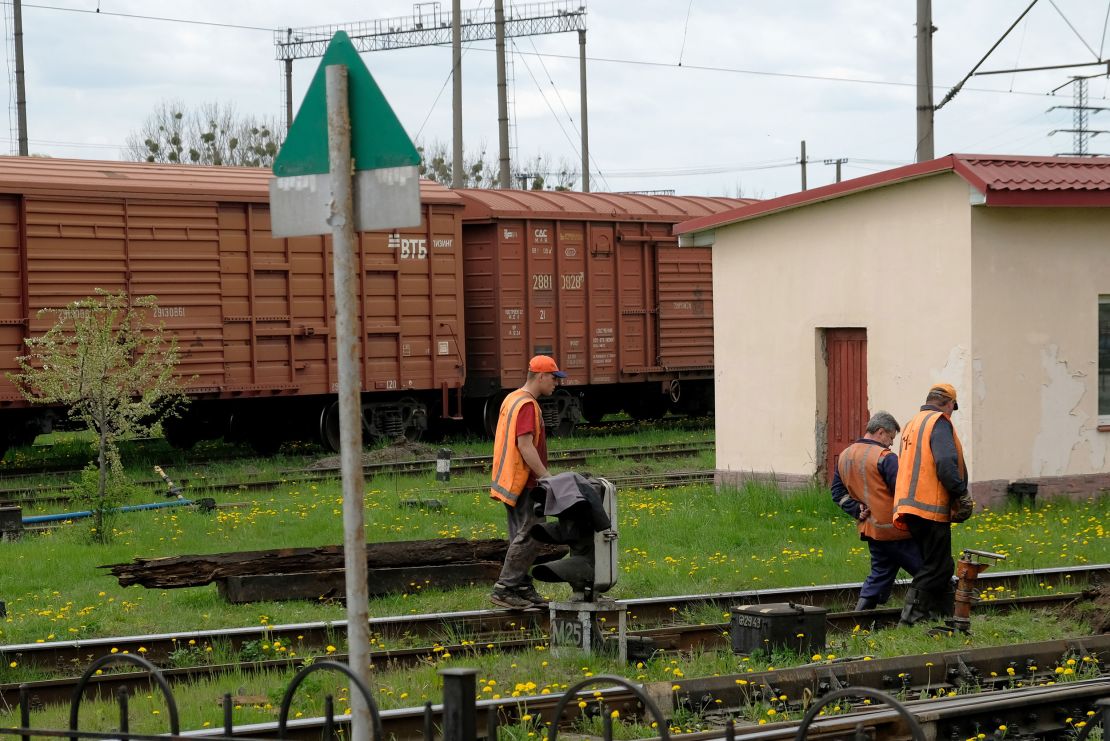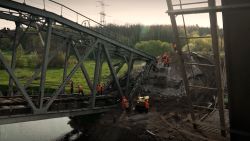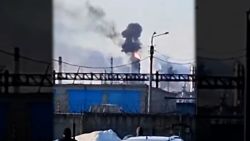The smell of burnt wire and rubber still lingered in the air around the railway power station on the outskirts of Lviv Wednesday morning, hours after the blaze was extinguished. A group of investigators was collecting debris from the Russian rockets that struck this place the evening before. Now it serves as evidence of Russia’s attempts to systematically destroy key infrastructure.
The Lviv power station was among six railway facilities in central and western Ukraine targeted by Russian forces on Tuesday evening, according to the chairman of Ukrainian Railways Olexander Kamyshin.
The coordinated strikes briefly knocked out power in parts of the region and caused long delays to more than 40 trains.
“There were also disruptions on our pumping stations, which are supplying the city with water,” Lviv Deputy Mayor Serhiy Kiral told CNN. He said contingency plans were executed to ensure the water supply was not impacted by the strikes.
Tuesday’s attack marks the latest in a series of recent attacks on the country’s infrastructure, with the railway network now one of Russia’s key targets.
On Wednesday, Russia said it believed any weapons – including NATO equipment – arriving into and moving within Ukraine were targets, according to Russian state-run news agency RIA Novosti.

Five train stations in western and central Ukraine were hit in the space of an hour on April 25. Two days later, a missile struck a rail and road bridge across the Dniester Estuary that links the southern port city of Odesa with the country’s far southwest region. Then on Friday, another important railway bridge was blown up near the town of Sloviansk in the eastern Donetsk region.
Earlier in April, in one of the deadliest attacks so far, at least 50 people – including five children – were killed after Russian forces carried out a missile strike on a railway station in Kramatorsk.
Pentagon spokesman John Kirby said Wednesday that Russian forces were “attempting to hit what we assess to be critical infrastructure targets out towards the West” in Ukraine including “electrical power, transportation hubs, that kind of thing.”
Kirby said that despite the most recent attacks, the US is still able to “flow” military assistance into the region, including “weapons systems” and other materials.
The national railway has always played a crucial economic role in Ukraine, transporting agriculture and heavy industry exports across the country’s vast territory.
But since the Russian invasion began in late February, the train network has become Ukraine’s lifeline to the outside world: It’s how weapons, supplies and humanitarian aid get into the country.
Mayor Kiral downplayed Russia’s attempts, saying he believed it would not have “any significant effect” on supplies coming from the West.
However, he did concede the attacks could hinder Ukraine’s trade with the outside world. “It may affect the exports of the Ukrainian commodities, which is very critical in these times of the year because we need to take out more than five million tons of grain in order to be ready for the new harvest.”
The network has also been the backbone of global diplomacy and solidarity. When foreign officials – including EU leaders, UK Prime Minister Boris Johnson and US Secretary of State Antony Blinken – have visited the country, they too have traveled in and out by train.
It is also a key lifeline to the many that have escaped the fighting. According to Ukrainian Railways, 3.8 million people – nearly 10% of the country’s entire population – used trains to get to safety in the first two months of the war.
For the more than 230,000 Ukrainians working for the railway network, the recent attacks have been a reminder of how dangerous – and vital – their jobs have become.
“We are worried. When we hear the siren, we have to run to the shelter. Just yesterday, two missiles hit nearby,” Andriy, a railroad worker on one of the lines leading from Poland to Lviv, told CNN. Andriy declined to give his last name due to concerns for his safety. The railroad is a strategic asset and its employees are not officially authorized to speak to the media.
Andriy, who has been working on the railway for 28 years, said he is incredibly proud to be part of the effort that keeps Ukraine moving.
As he dug out stones and soil underneath the rail, he spoke of his fear. “We just want to work in safety, nobody wants to be hit from the air,” he said.

As the railroad plays such an important role in the conflict, Ukrainians have also used it tactfully, striking against key parts of their own network in Russian-occupied areas of the country.
Last Thursday, Ukrainian forces blew up a bridge that connects the Crimean Peninsula to a part of southern Ukraine occupied by the Russians in an attempt to disrupt their flow of weapons.
Serhiy Bratchuk, a spokesman for the Odesa military administration, said Russian forces were using the bridge to “supply weapons and fuel from Crimea.”
Andriy’s colleague Maksym is working on the railroad as part of his compulsory military service.
As a religious man, Maksym, who also declined to give his last name, said his faith doesn’t allow him to take up arms. “So I am doing this as an alternative,” he told CNN, saying that making sure that the trains keep running is his way of fighting.
CNN’s Tim Lister, Madalena Araujo Isa Soares contributed reporting from Lviv, Ukraine. CNN’s Michael Conte, Barbara Starr and Nicky Robertson also contributed reporting.























